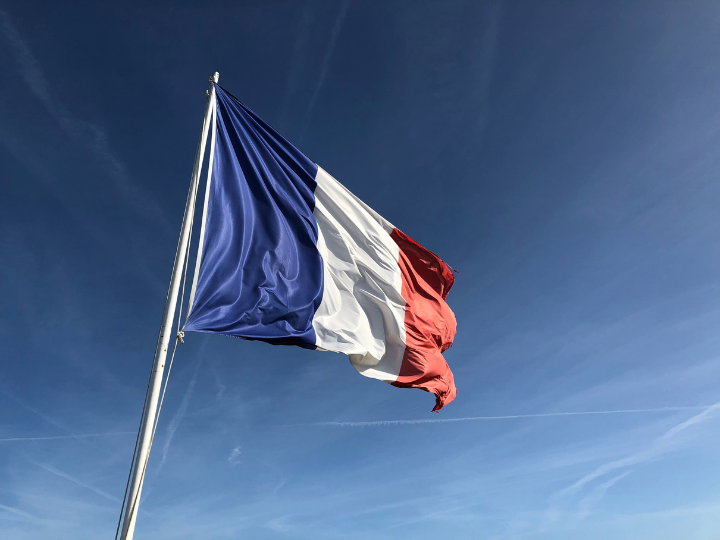Well, first of all, it is a country with lots of diverse natural beauty. The coastline in itself is amazing with its natural reserves like the diving at Dimaaniyat Islands and the preservation of the green turtles at Ras Al Jinz, a scientific centre located along the unending sandy beaches covering 1700 km from north to south. Modern and charming cities like Sur, Salalah and Muscat are spread out along the coast. But for me, the best side of Oman is the interior. This is where you find a profound feeling of the old Arabia, famed for its Bedouins travelling from one souk (market) to another by camel trading frankincense, myrrh and gold. They travelled through two of the biggest sand deserts in the world, the Wahiba Sands and the biggest of them all, Rub Al-Khali, made famous by the British explorer Wilfried Thesiger.
The Bedouin are still there today. The inland is also where you will find the best of the over 500 forts and towers dotting the country, Nakhal Fort, located not far from a string of beautiful palm oasis’s called Al Hamra, Misfah, Bahla and Nizwa, located just at the foot of spectacular mountain scenery at Jebel Shams, where the country’s version of Grand Canyon can be found, Wadi Ghul. The souks of Nizwa and Muttrah, where big amounts of frankincense, myrrh and gold still can be found are a very strong memory. Not for the shopping, but for the atmosphere and one just has to stop at one of the coffee stalls and have a kavva and dates whilst watching the exiting souk life, this is true happiness! I also have a strong memory from Nizwa when one of my Omani friends, Kamil Al Raisi, made me avoid one of the more upper class touristic restaurants –after awhile, since it is all buffets and full of tourists from everywhere, you get fed up, after all one is in Oman to meet local people- and we instead just sat down on a mat on the parking lot outside the souk in Nizwa and had a bunch of tasty mutton kebabs together with two rough looking Yemenis who had come in for the weekly cattle market. That is the true Oman. It’s people.
“People, Culture and Nature remains the essence of the experiences that we offer” says Ammar Al-Saleh, CEO at Eihab Travels, one of Oman’s biggest tour operators, when I visited him in his grand office with a big painting of the Sultan overlooking us, “And we have noticed that the major part of tourists coming to Oman today wants authentic experiences. Most of them come from Germany. But we want much more tourists and we are one of few tour companies who support eco tourism. Another preference our visitors want and ask for.”
“Who are you competing against as a tourist destination?”
“First of all, the other Gulf countries. In comparison to them, where can a tourist see the legendary Bedouins but in the sands of Oman? And where do you see such diverse natural beauty in abundance- the mountains, the wadis, the dunes, the beaches… And if you compare to other tourist destinations like India or Syria, we always put Oman higher up in the ladder in terms of standard, cleanliness and safety – which are also vital elements in judging the quality of a destination. And not to mention the people, which are more hospitable? I think the Omanis.”
I agree. It is the people I met I remember the most. Oman is unique in many ways. And when I talk about people it is not just the Omanis themselves, but all the Indians, Pakistanis, Baluchis, Persians and also Europeans who live here. There’s such a spirit of pioneering, dignity, kindness and generosity, that I am amazed that distinguished behaviour like that still exists in a world which by the day is getting harder, more violent, stupid and more difficult. There are a few meetings I remember more than others, due to their dignity. One was an old man, a beekeeper, living in a small village compromising a few houses, all belonging to his family, somewhere in the Jebel Shams range. The bees had once been transported from Yemen all the way to his village, it took 12 years, and he kept this ancient beekeeping tradition alive with a constant twinkle in the eye. Kamil had warned me before, he will invite us and we will not get out of his house before we are stuffed with honey. Very true indeed! During this visit, once again, I witnessed the dignity of just serving a cup of coffee to a visitor. As a visitor you feel honoured indeed! The beekeeper didn’t only look like one, but had the awareness of a great mullah! We felt sick for a couple of days after that, Kamil and me. Too much honey!
Another visit I remember strongly was to a Bedouin family living deep into the great Wadi Ghul. They had been carpet weavers for generations. I asked one of them if everything was better nowadays, since Sultan Qaboos Bin Said had modernized the country dramatically since he took over power from his father and he answered: “Everything! Nowadays we can travel anywhere without being worried to be attacked by another tribe.” He and his family had ended up far into this deep wadi to get away from hostile tribes once upon a time. We sat there in the shadow of a big ghaf for a long time, eating dates and drinking tea. If it hadn’t been for the parked cars and the eternally ringing mobile phones, it could have been a scene from a time hundreds of years back. Or only 39 years ago. Because the amazing fact is, when Sultan Qaboos kicked his father from power in a bloodless coup 1970, the country had no electricity, only a few kilometres of paved road, just two primary schools, a meagre two hospitals run by an American Mission and the country was in a state of civil war. Oman has since caught up with its much more affluent neighbours and today boasts an efficient, very modern country with great infra-structure and offers peacefulness and stability. And they have preserved their traditions and history far better than their Gulf neighbours. For example, it is against the law to build houses higher than five floors, all men should dress in dishdasha and head scarf and look tidy. Cleanliness is important, you will get a ticket if you get stopped by the police and your car is dirty! And, if by chance you see a bit of dirt, it will be in the desert! This is also where you will find the real desert Bedouins! And even if the drive four wheel drives instead of camels today, and live in air conditioned houses and not in the black tents made of goat hair, in heart they are still Bedouin!
My first meeting with them is printed deep in my memory. Whilst passing through the Wahiba Sands together with a friend, I stopped to take a photo of the first camel I saw. Big mistake. Suddenly a car shot out of the desert with a yelling woman. After some continuous yelling which felt like a long time, I thought she was screaming at a guy who at the same time came to pick up the camel, maybe her husband, and I didn’t realise it was at me. Then she drove up to our car and screamed through the window: ”Is he stupid. Surely he must see that she is pregnant and if he takes flash photos, she might loose her baby!” “No, he doesn’t know anything about camels”, my friend said, “He didn’t understand that you were shouting at him.” “But he is English” she said a bit surprised, “They know everything!”
She looked both stunned and upset at us for a moment. The finger tips on both hands were henna painted black, she had a scarf slightly covering her very dark hair, lots of golden looking armbands on both wrists and her stare was proud and free of any worries. Except for her female camel. “You see?” my friend said, grinning, when we continued our trip on the sandy and bumpy, very corrugated, desert road, “Just like the story from Africa you told me yesterday? That local people believe white people are better? And that a flash can kill the baby of the camel? This is because they are not educated. They live here, they’re people of the desert, hard and tough people, but they are not educated all of them. Then they would know what I know and I know you are not better than us!”
Next we visited a Bedouin camp located in between two great dunes. An old woman and her son who treated us to their generosity and I didn’t even know that they survived on selling carpets to tourists, because nobody told me. That is another great thing with Oman, there’s no hassling by tiresome sales people. Not even in the Muttrah Souk. The same regards the issue of religion. In some countries you get a 50 minute lecture from a local if you by chance don’t belong to the same religion. Not in Oman. The word is dignity. Oman is a country to love.
“People who come to Oman tend to be independent-minded, looking for something different, and that really suits us”, Wael Lawati, CEO of Omran, the government of Oman’s tourist and investment arm, told me outside the construction of living quarters for the athletes who will participate in Asian Beach Games 20101, “We are not seeking to become a mass-market destination – more a choice for the discerning traveller, whatever his or her budget range. Tourism is seen as one of the long-term growth areas for the Omani economy and so we expect consistently strong growth over the coming years. A large part of this will be thanks to increasing supply, with new resorts and hotels coming on line, through Omran and others.”
“What kind of obstacles are you facing at the moment to fulfil this dream?” “I think the main problem is still not having enough awareness of just what we have to offer – not just amongst our target customer base but in Oman itself”, Wael continued in his calm voice, “The work of the Ministry of Tourism and of Omran is not just to sell the country internationally but to educate Omanis on the benefits of a strong tourism sector.” Until than, everyone seeking an experience out of the normal, please go to Oman right now, before everyone becomes aware of this enormous potential!
About the author
Mikael Strandberg was born in 1962 in Sweden. He started his professional career as an explorer 23 years ago. The multitalented Mikael is currently working as an explorer, a lecturer and a writer. Mikael has also produced three internationally renowned documentaries for television “PATAGONIA – 3,000 kilometres by horse” and “THE MASAAI PEOPLE – 1,000 kilometres by foot” and his much awarded, “-58 degrees – exploring Siberia on skies.”




 By: N. Peter Kramer
By: N. Peter Kramer
